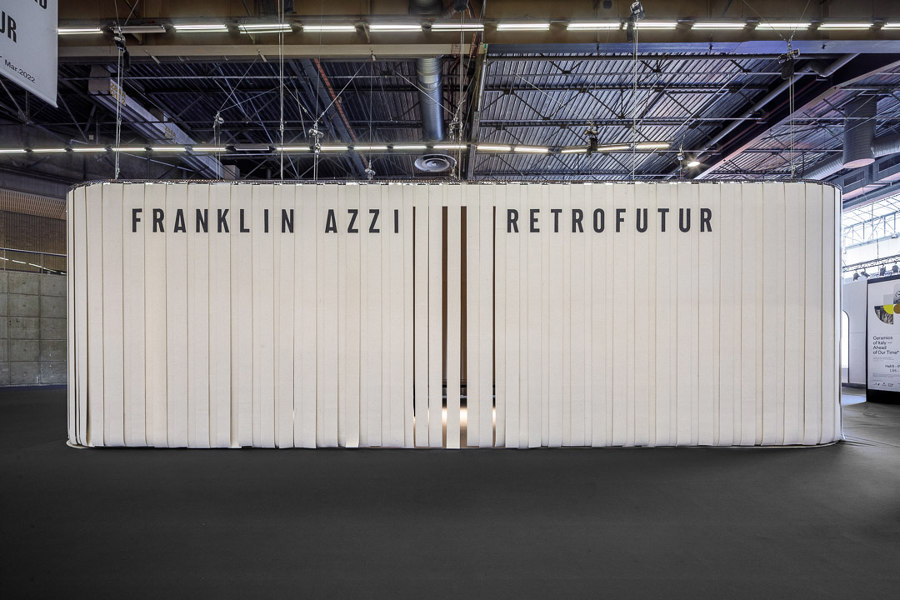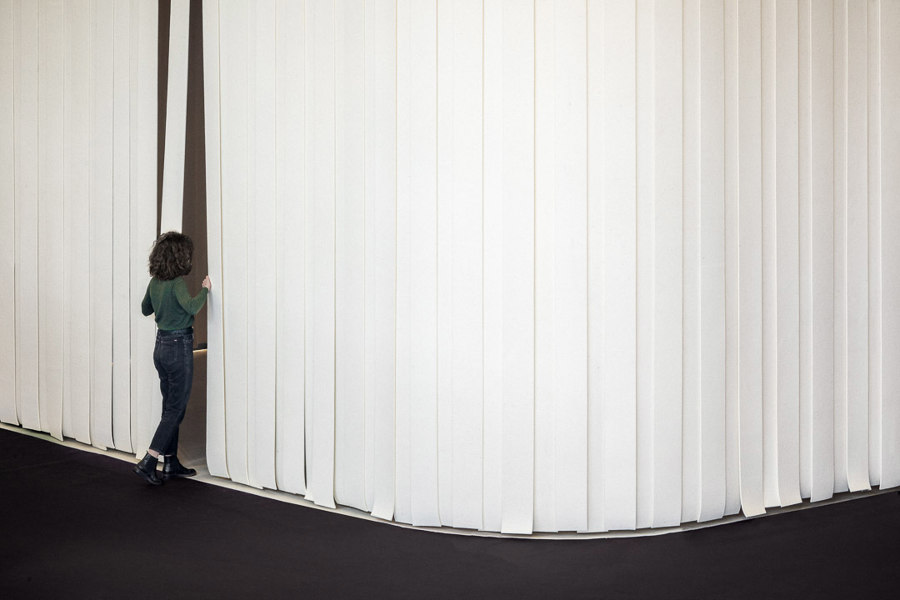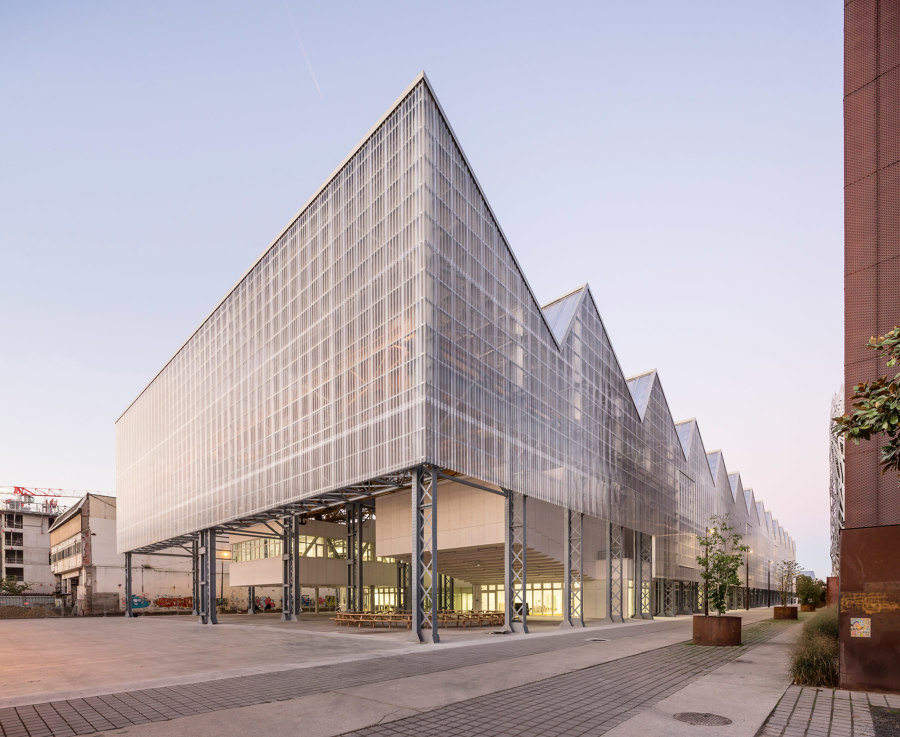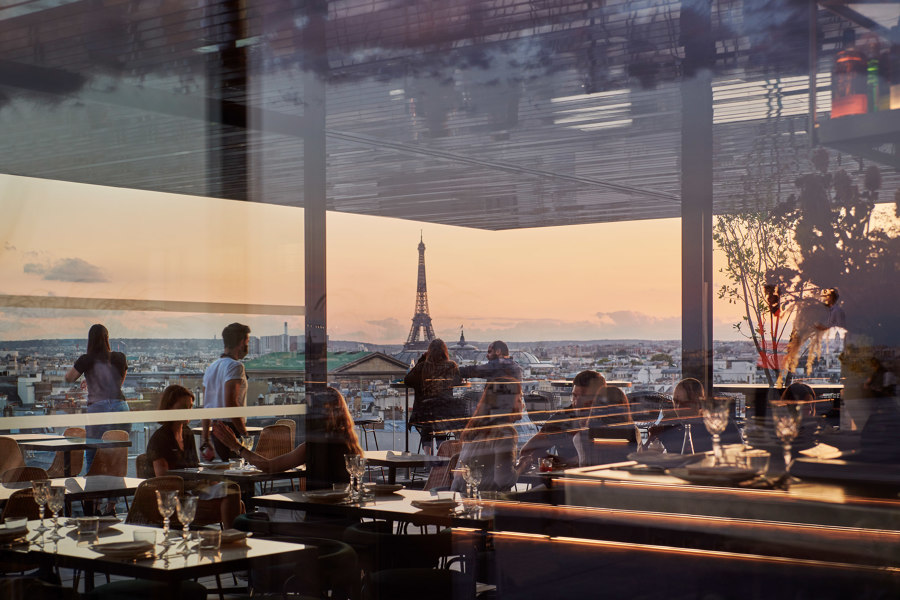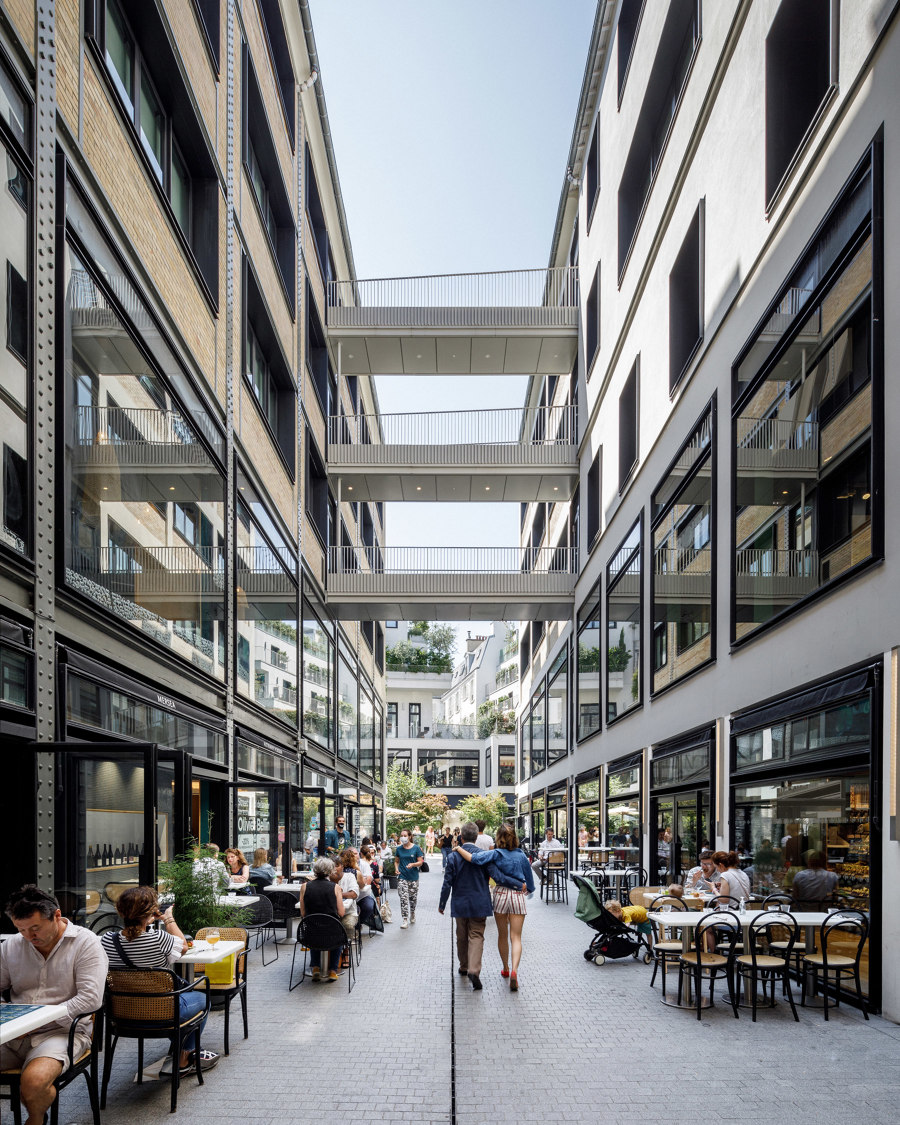New build is old news: Franklin Azzi on the architecture of the future
Text by Simon Keane-Cowell
Zürich, Switzerland
11.04.22
Maison&Objet 2022 Designer of the Year Franklin Azzi on architectural surgery, the current state of French design and why new build could soon be a thing of the past.
Maison&Objet Designer of the Year, French architect Franklin Azzi. Photo: Cyrille George Jerusalmi
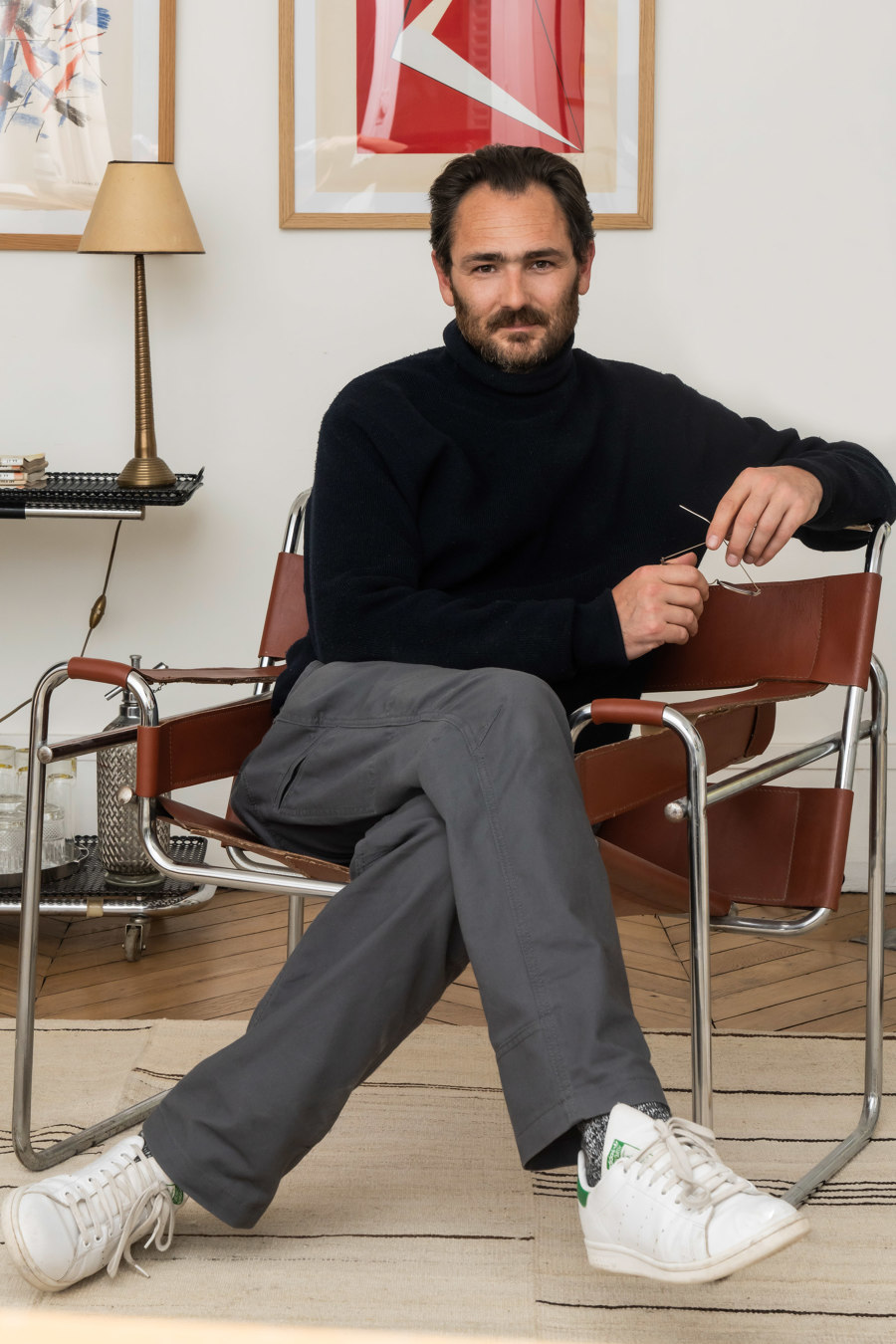
Maison&Objet Designer of the Year, French architect Franklin Azzi. Photo: Cyrille George Jerusalmi
×'Seven years is too long,' Jacques Chirac famously argued in his attempt to sell reform of the presidential mandate to the French public at the turn of the millennium. 'Five years is more modern.' A national referendum saw les citoyens express their agreement, which was followed a few years later by an amendment to the constitution that limited the number of terms a president can hold office to two. Ça suffit.
I'm sure esteemed French architect Franklin Azzi has no need for such checks and balances in spite of the fact that he's twice been named Maison&Objet Designer of the Year. And in a row. Admittedly, the circumstances are somewhat unique. Having been declared the fair's patron par excellence for 2020, the pandemic went and put paid to any physical event. Hence Azzi 2.0 last week in Paris at the fair's rebooted 2022 edition.
Azzi's artistic installation at Maison&Objet 2022, RETRO FUTUR, explores the creative processes of the future, using tools from the past. Photos: 11h45

Azzi's artistic installation at Maison&Objet 2022, RETRO FUTUR, explores the creative processes of the future, using tools from the past. Photos: 11h45
×I caught up with the man himself at his on-site installation – where a long, digital-screen-topped table displayed moving images of, conversely, the myriad analogue tools traditionally involved in the architect's daily work – to discuss the role and responsibility of the architect today, the current state of French architecture and design, and why, in the future, new buildings will be old hat.
Architonic: You’ve spoken about the multidisciplinarity of the architect, and your installation here – in the breadth of the objects shown virtually – speaks to a certain bandwidth of activity. But can architects do everything?
Franklin Azzi: They definitely cannot do everything. I’m really convinced that we are not God. I mean, on a big project we need to collaborate. We’ve learned here to have a mind for synthesis because, when you have big projects, you need to articulate the hierarchy between things, the importance of different elements.
The Ecole des Beaux Arts de Nantes buildings by Franklin Azzi Architecture sit on the same site as the former Alstom warehouses. Photos: Luc Boegly
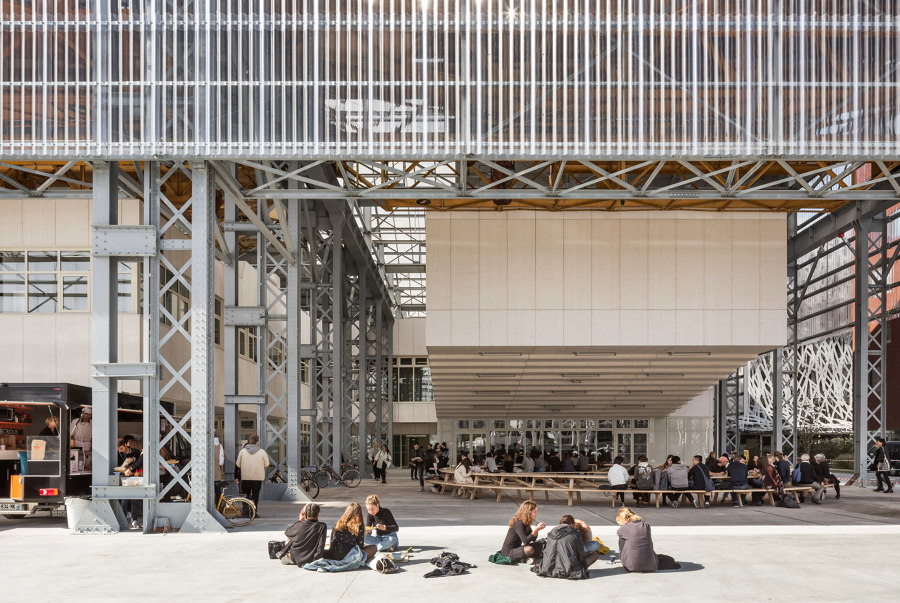
The Ecole des Beaux Arts de Nantes buildings by Franklin Azzi Architecture sit on the same site as the former Alstom warehouses. Photos: Luc Boegly
×For ten years, we’ve been working with an enormous team. Sometimes in our office, there are 25 people and each person represents a different discipline. Since sustainable design has emerged in architecture, it has become more and more complicated as well, because there are new actors coming into the building process. So, I think we shouldn't lose the skill of synthesis, of 'melting' all those disciplines together.
An architect is not able to do everything. That's what I believe. But we should know a little about everything.
Azzi's Galeries Lafayette pavilion features a 1,700-sqm terrace with breathtaking views across the French capital. Photos: Ambroise Tezenas (top), The Social Food (bottom)
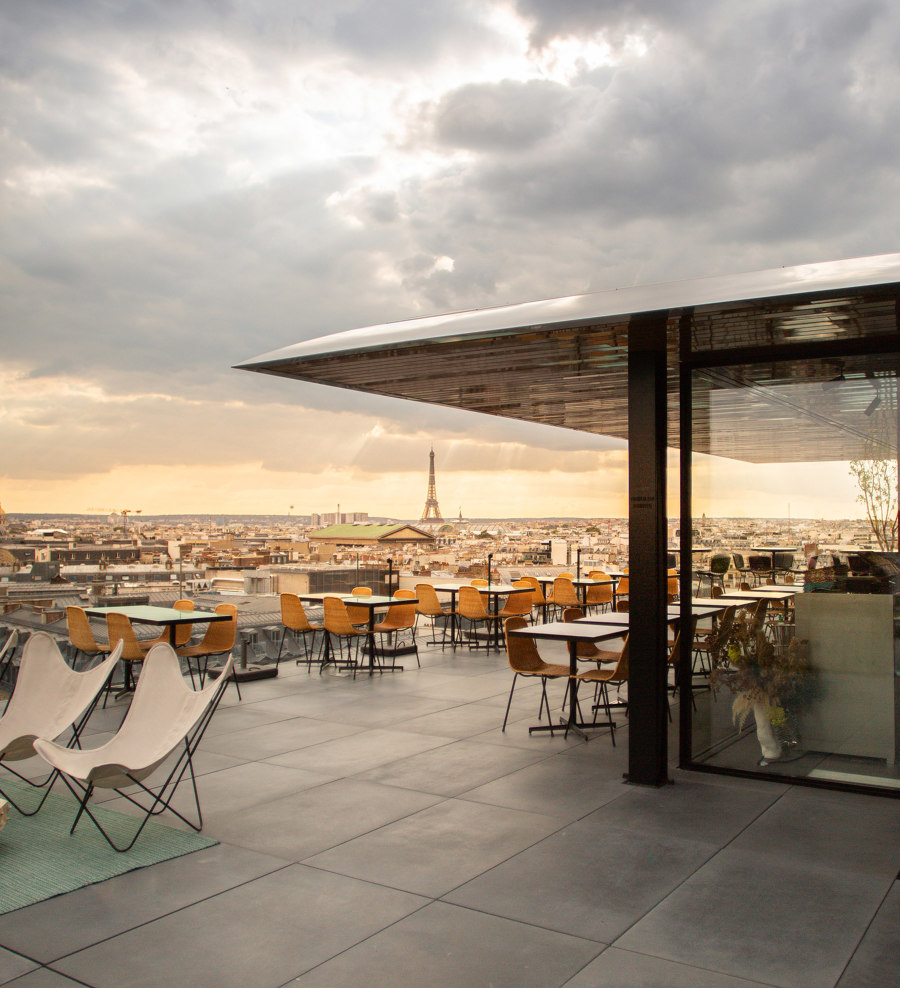
Azzi's Galeries Lafayette pavilion features a 1,700-sqm terrace with breathtaking views across the French capital. Photos: Ambroise Tezenas (top), The Social Food (bottom)
×AT: How would you describe the current state of architecture and design in France? What's working? What's not working?
FA: I think French architecture has been losing lots of strength over the last 10 or 20 years. In the 1980s and 90s, everybody thought the architect was an artist, and I really am totally against this concept. I feel that in some ways we can be like an artist in the methods that we use and the things that we produce. But most of my day is more like a technical day. How to resolve a mathematical equation about all the constraints that come up all the time.
There will be no more modern buildings in 20 years’ time. That’s my belief
So, I don't feel that architecture in France is in such good shape, because we have that heritage of having a person that is a bit too artistic in the way they do things. For example, English people or American people know how to export their knowledge because they are not just creative, they are very strong technicians. Who did the first towers? The English. Who did the first towers in Hong Kong? The English did the first towers in Hong Kong. We are in a bad condition here because we cannot go to the international market, we cannot go abroad. And I'm trying to change this.
In the heart of Paris' 7th arrondissement, Franklin Azzi Architecture's Beaupassage, for clients Emerige, makes a trademark of its industrial character and heterogeneous facade. Photos: 11h45 (top), Charlotte Donker (bottom)
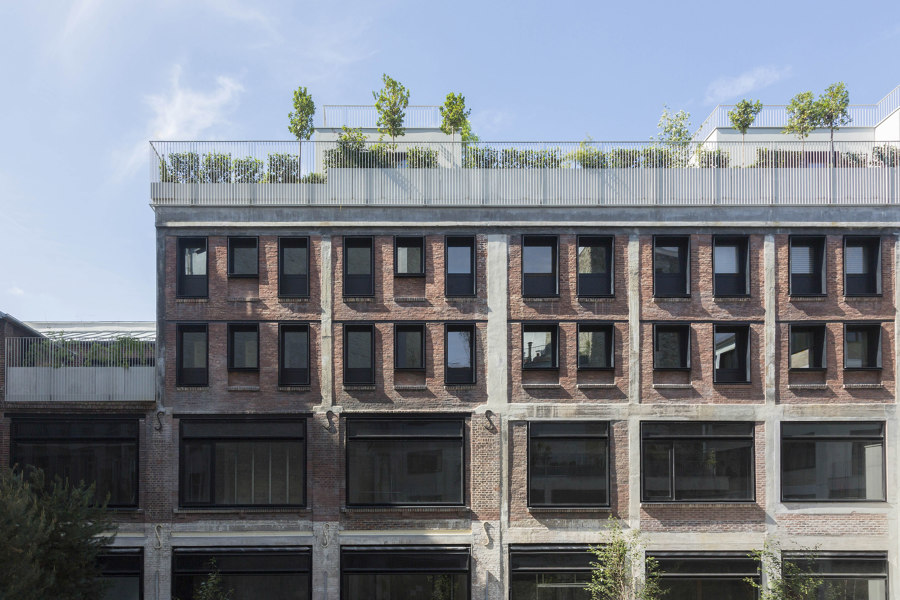
In the heart of Paris' 7th arrondissement, Franklin Azzi Architecture's Beaupassage, for clients Emerige, makes a trademark of its industrial character and heterogeneous facade. Photos: 11h45 (top), Charlotte Donker (bottom)
×AT: There are people who would say that the architect, the designer has more responsibility now than ever, socially, politically, economically, environmentally. What's your responsibility, as you see it, and how do you face up to it in your work?
FA: I believe that when you analyse all the history of architecture, most of the time the evolution of architecture has been part of a crisis. I mean, a crisis will bring on a new kind of architecture. Right now, we have an enormous economic crisis that has continued for a long time, we have a COVID crisis, plus a social crisis which is enormous. All of these will change the way we do architecture and I believe that my generation will be the ambassadors of those changes.
We don't design buildings like they used to be designed in the 1980s. Nowadays, designing something that is just formalistic is not enough for a building. You need to deal with sustainable design, and this is a design which is not only plastic. There are a lot of techniques behind it, there is a lot of knowledge. We have to build new things with materials that are already there, for example. And that’s very different from the 80s, when we wanted to appreciate new materials, new plastics.
Franklin Azzi Architecture's Kiosque Eiffel, at the foot of the Eiffel Tower, is microarchitecture at its best. Photo: WEARECONTENTS
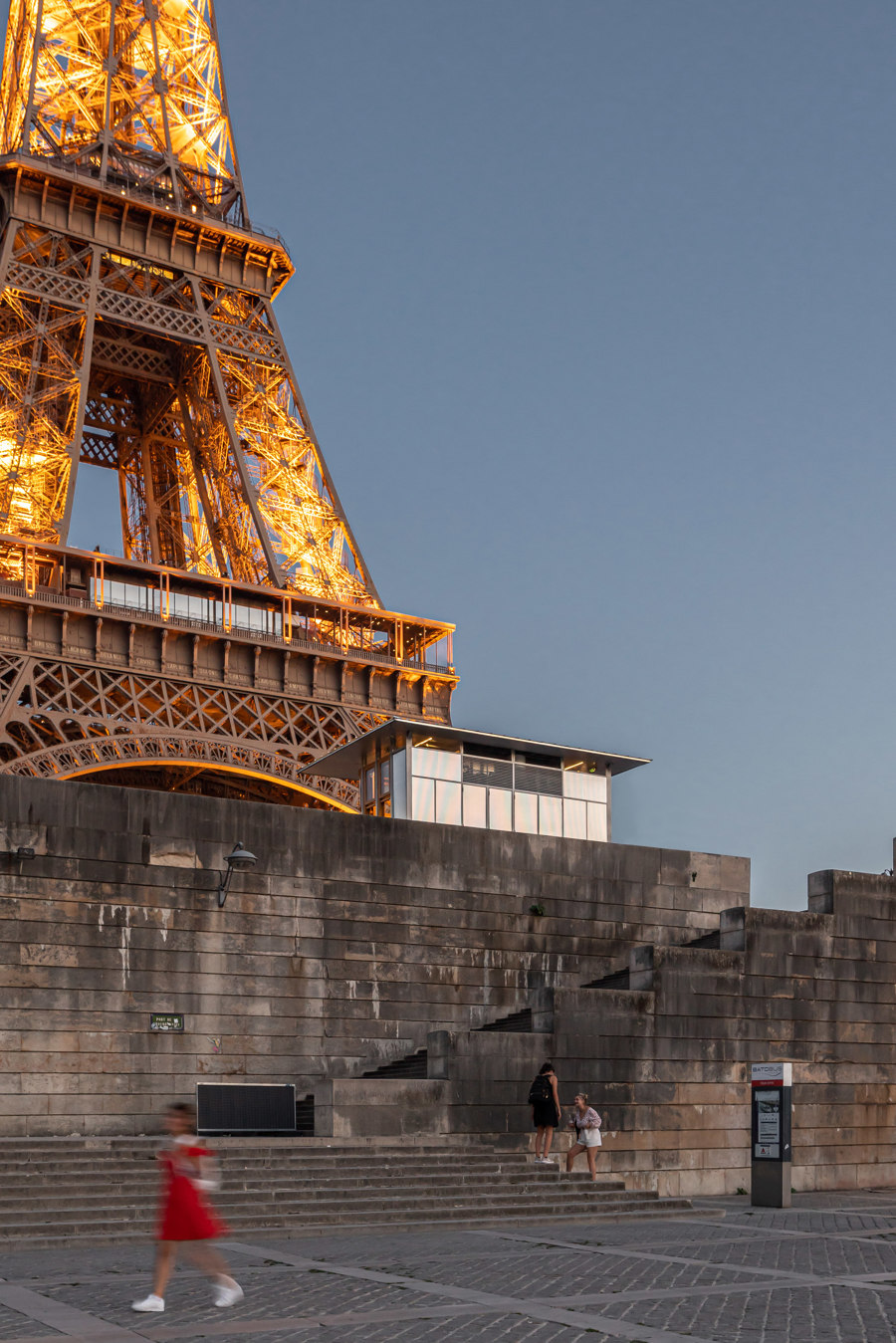
Franklin Azzi Architecture's Kiosque Eiffel, at the foot of the Eiffel Tower, is microarchitecture at its best. Photo: WEARECONTENTS
×Around 70% of our work at the office is only 'rehab' of buildings. It's like we are more doctors than architects. A building is a body. I always say that a building is a skeleton, with skin. You've got organs inside and we have to replace them, change them, like surgery, and that's the future, that's what we'll have to do. There will be no more modern buildings in 20 years’ time. That’s my belief.
© Architonic

